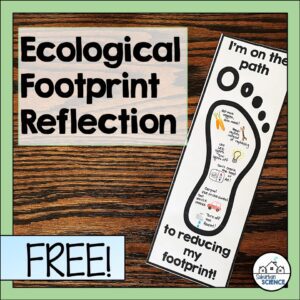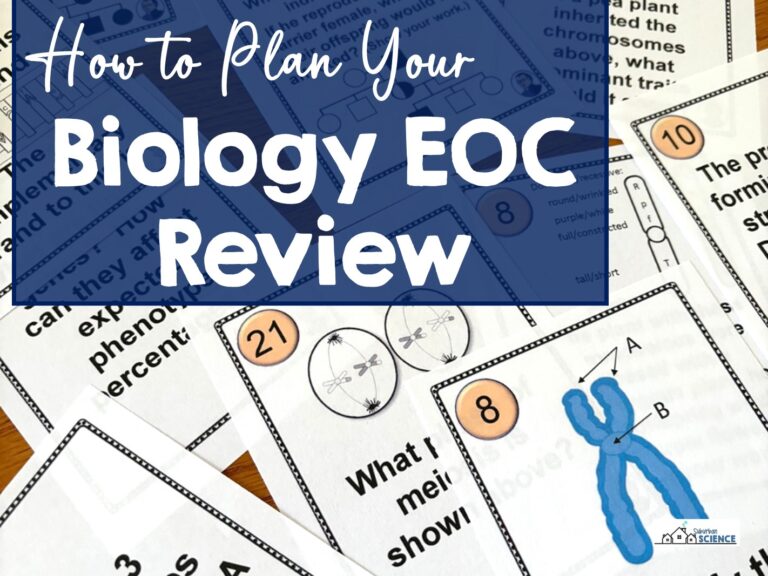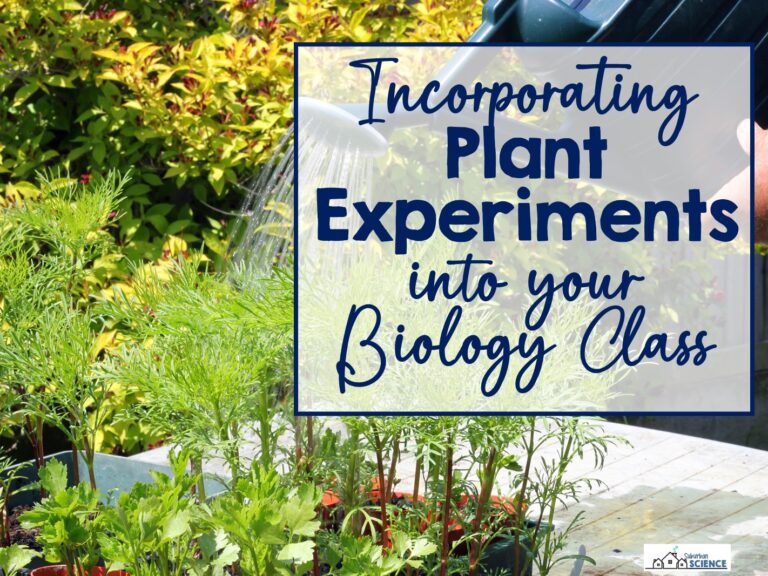Need some Earth Day projects for teens? Earth Day is a great opportunity to bring relevant environmental issues into the middle school or high school classroom. These students are part of a generation that will soon be responsible for protecting the environment and encouraging conservation in their own communities, so let’s make sure they’re aware of what they’re protecting!
I’m a huge proponent of getting students outside, especially during the weeks leading up to and including Earth Day. Outdoor learning brings many benefits including improved concentration, teamwork, and real-world problem-solving. Many of my environmental science lessons include outdoor components to maximize these benefits. I know outdoor learning isn’t feasible for many teachers, though, so you’ll find both indoor and outdoor ideas in this list!
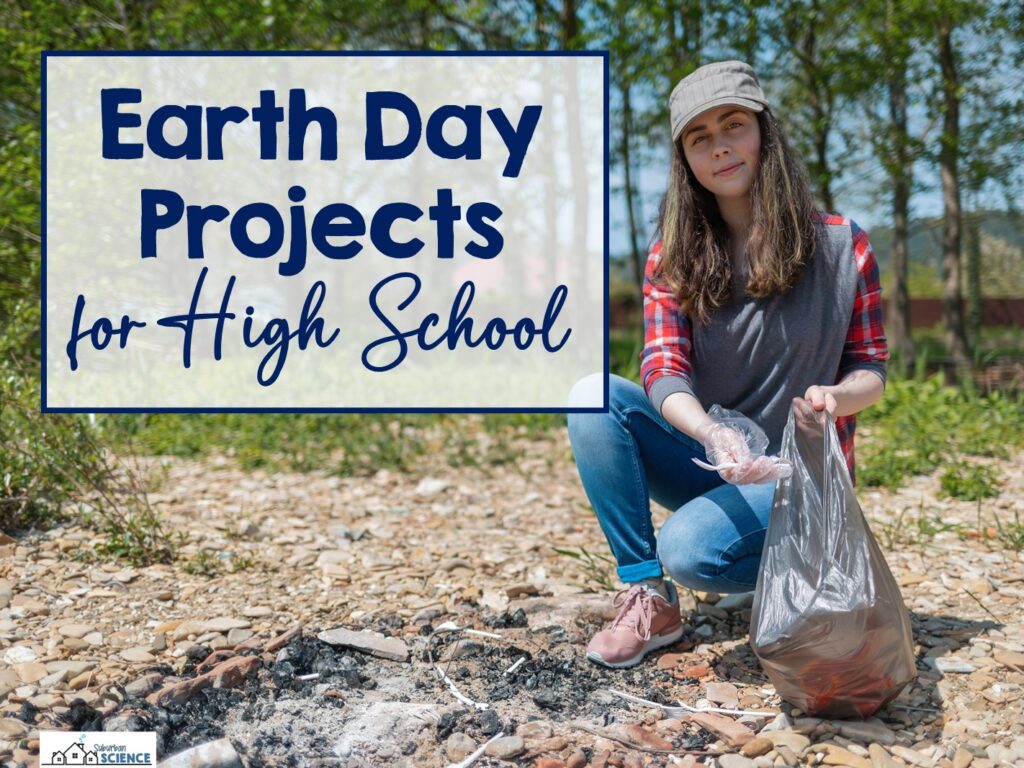
Here are some fun Earth Day ideas for teens:
Encourage Ecological Awareness:
-
- Use an ecological footprint calculator to have students consider the impact of their personal lifestyle on the environment. Several free calculators are available online. To help students reflect on some improvements they can make, you can use this FREE footprint bookmark activity.
-
- Do an invasive species research project. Students can learn about invasive species in your local area or let them choose one they’re interested in. As an assessment, students can make an informational poster or website to teach others in their community about the dangers posed by this species.
-
- Listen to a podcast. I particularly love the critical thinking and practical ideas found in the “How to Save a Planet” podcast. Students can create a summary of an episode for homework or maybe you just want to let them listen to an episode outside during class time. Sometimes we all need to take a break in nature!
-
- Evaluate the amount of plastic trash each student uses during one week by having them collect and/or record every piece they use. This is a great way to incorporate personal responsibility and can easily include math skills like graphing, finding mean/median/mode, etc. after students compile data as a class.
-
- Conduct a personal water audit. Students record or estimate the number of minutes spent using water during their week. This lesson on Surface Water includes a chart to help students calculate the amount of water they’ve used based on specific activities.
-
- Not all recycling is equal! Have students research the processes involved and effectiveness of recycling methods for plastic, glass, aluminum, glass, and even water. This is a great way to introduce a cost-benefit analysis, which is an important concept in environmental studies and economics.
Collect and Use Ecological Data:
-
- Incorporate some real ecological data into your class with Data Nuggets. This website was designed by scientists and teachers “to bring contemporary research and authentic data into the classroom.” It is a wealth of information that includes many environmental studies for students to examine and analyze. It’s even searchable by topic!
-
- Students can do a bird survey in their backyard. The Cornell Lab of Ornithology has great free lessons for every age group, including a lesson on how to use birds as bioindicators.
-
- Have students compare the biodiversity of two samples using quadrats in the schoolyard. Quadrats can quickly and easily be made from PVC, which allows them to be used year after year. If students need help identifying plants or organisms in the sample, I highly recommend using the iNaturalist app, which is a free crowd-sourcing app for identifying many different species.
-
- Conduct a lab to estimate the amount of air pollution and particulates near the school or in the students’ homes. This lab procedure from Teaching AP Science is easy to follow and uses inexpensive materials.
-
- Do a macroinvertebrate stream survey. This is a classic warm-weather activity that students will truly enjoy if you have a waterway nearby. Macroinvertebrates are easily identified and can be great bioindicators to illustrate the health of the stream.
Build Something:

Berlese Funnel
-
- Explore soil ecosystems by building a Berlese funnel. This is an easy and inexpensive apparatus to build (see my photo above) and it allows students to extract and examine organisms found in leaf litter and soil that otherwise go undetected. You can get a free copy of my Berlese funnel lab by subscribing to the Free Science Stacks on my website.
-
- Find or build a geocache! This treasure-hunting activity is a great opportunity to get students outdoors. When I did this with my environmental science class, I had them create a geocache that explains the local ecosystem. That way other geocache hunters can be a little more biologically educated after they find it. If you’ve never done geocaching before, definitely check out the Geocaching website for a tutorial.
-
- Build an aquifer model to demonstrate the infiltration of groundwater pollution and its effects on irrigation and drinking water. This image shows the addition of “pollution” to an area. The pump draws water from the aquifer and students can clearly see the pollution when it is pumped out of the well.
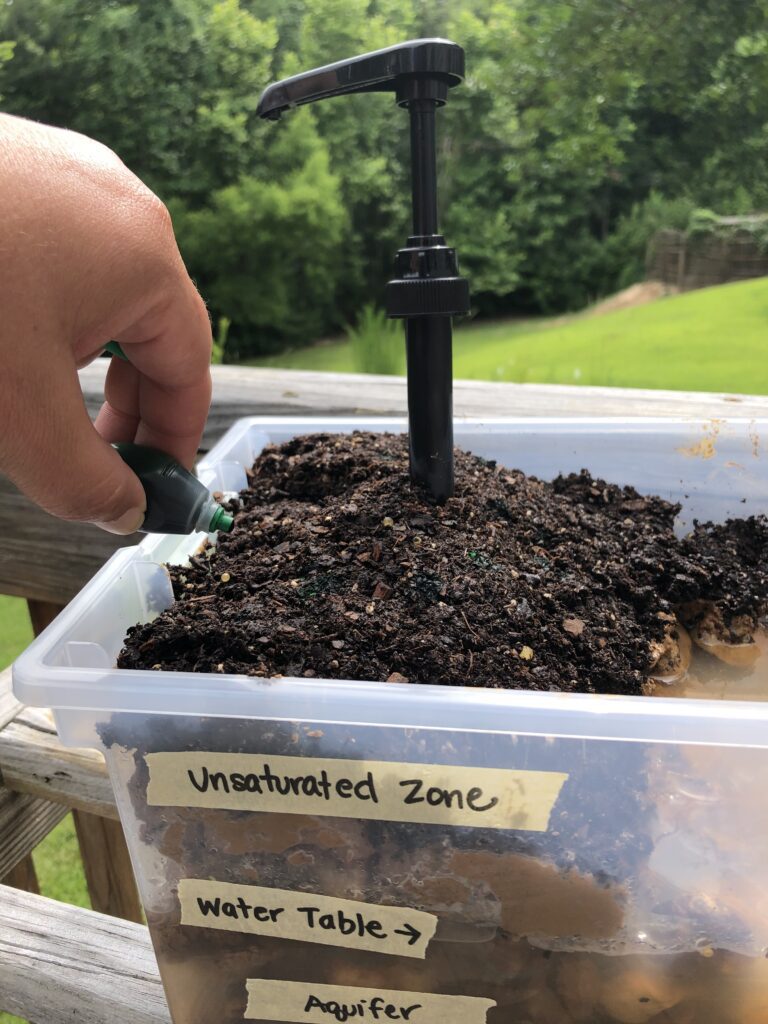
Aquifer model from my Hydrosphere unit
If you have a few weeks to explore some Earth Day concepts, your class can build a rain barrel or compost bin or plant a garden on the school grounds. Find something your high school science students love and go with it! The possibilities are endless!

